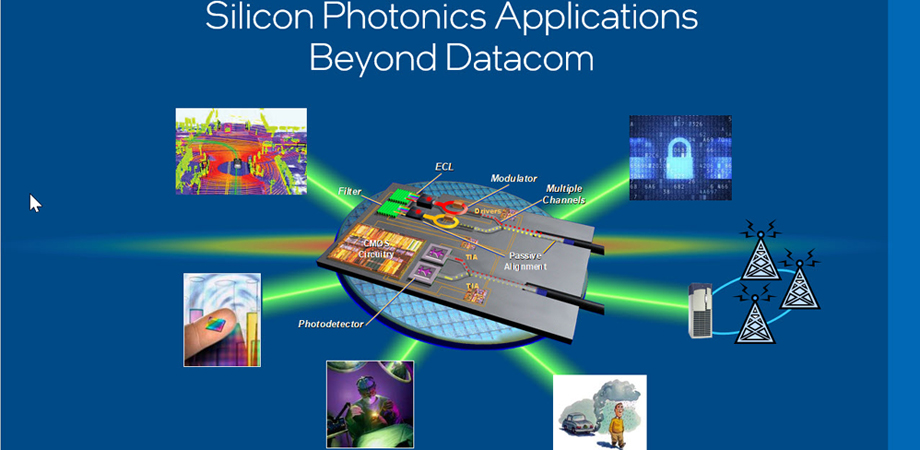Intel, SK hynix, and NTT turn to light-based communication between chips and memory to reduce power consumption by up to 40 percent
Intel, SK hynix, and NTT explore processors with integrated silicon photonics and terabit/s class memory technology.

Intel has teamed up with Japan's NTT and South Korea's SK hynix to develop next-generation chips featuring optical technology that communicate via photons (light) instead of using electrons, according to a report from Nikkei. The companies reportedly obtained financial backing for their joint work, which focuses on integrating silicon photonics and similar technologies into semiconductors.
The collaboration between Intel, NTT (a leading Japanese telecom carrier), and SK Hynix (a leading memory maker) leverages the specific strengths of each partner. Intel is certainly an expert in processors, whereas SK Hynix specializes in high-performance memory chips. NTT's role is to coordinate the collaboration between the two chipmakers, the report says.
Meanwhile, given the fact that the three companies make completely different products, it looks like they will mostly focus on the silicon photonics optical technology in general (e.g., materials, integration, etc.) as well as aspects like the manufacturability of chips featuring silicon photonics.
The collective goal is to develop production technology for devices that incorporate optical technology into logic chips and memory technology capable of handling terabit-class data speeds by fiscal 2027 — aiming to achieve a 30% - 40% reduction in power consumption compared to conventional products.
Processors and memory with optical connections will be particularly beneficial for artificial intelligence (AI) and high-performance computing (HPC) applications that have to process vast amounts of data. Currently, optical communications are converted into electrical signals before they reach processors or memory. The new technology proposes to integrate optical technology directly into processors to improve performance and save power.
The Japanese government's substantial financial backing of approximately ¥45 billion ($305 million) certainly indicates the national significance of this initiative, which could help to revitalize Japan's position in the global semiconductor supply chain. It remains to be seen which chipmaker in Japan will actually produce silicon photonics chips in the country.
For now, Intel, NTT, and SK hynix have not commented on the collaboration, possibly because the details have yet to be finalized. It is not uncommon for NTT to work with foreign entities on promising technologies as the company's business lies far beyond telecommunications.
Get Tom's Hardware's best news and in-depth reviews, straight to your inbox.
Intel recently sold its silicon photonics business to Jabil.

Anton Shilov is a contributing writer at Tom’s Hardware. Over the past couple of decades, he has covered everything from CPUs and GPUs to supercomputers and from modern process technologies and latest fab tools to high-tech industry trends.
-
bit_user How much latency would photonics add? I'm imagining this is mainly going to be for CXL. If we get a fast memory tier in package and the large, expandable memory pool gets attached via CXL, perhaps the latency impact of switching to photonics will be minimal.Reply